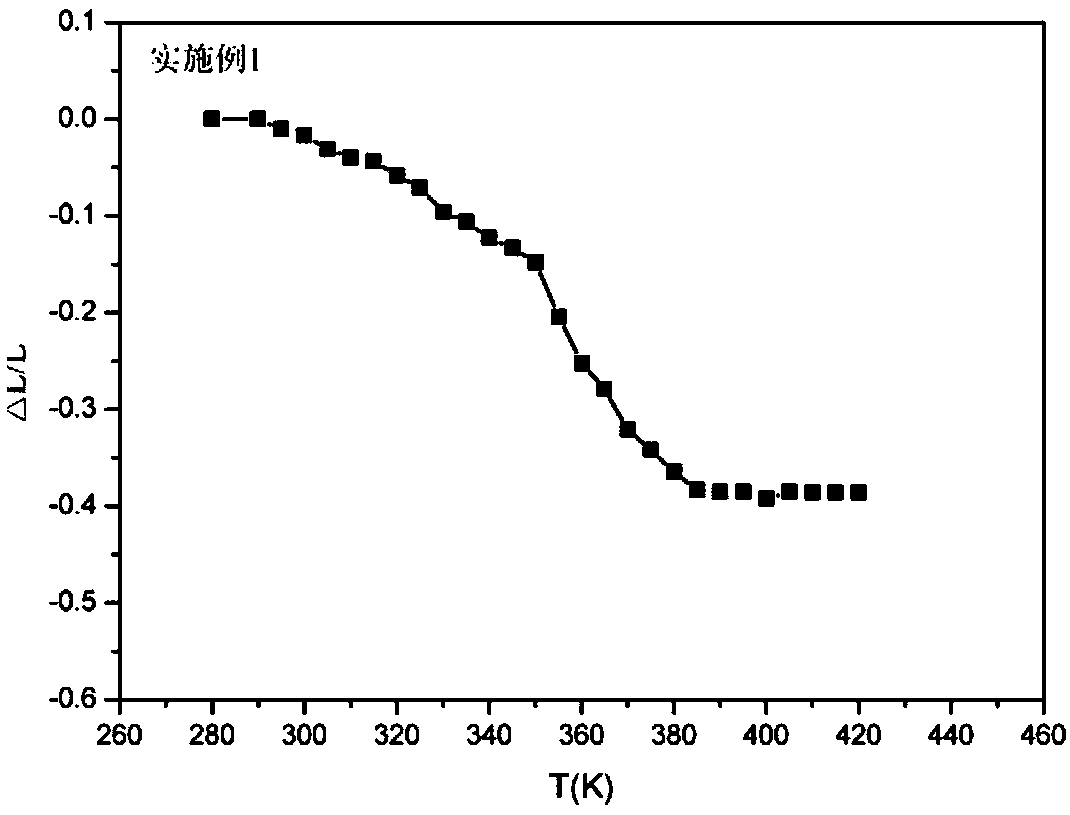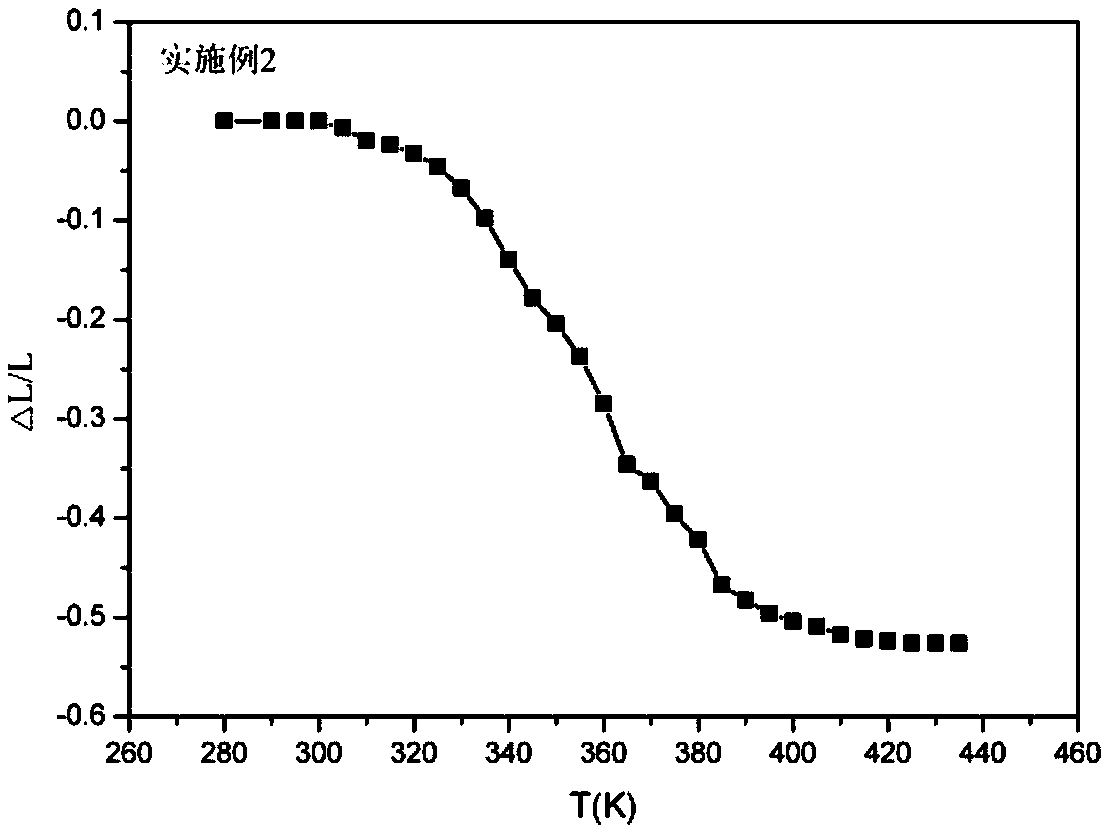Negative expansion memory alloy and preparation method thereof
A memory alloy and negative expansion technology, which is applied in the field of shape memory alloys, can solve the problems of thermal expansion, mutual extrusion, and failure of metal structural parts, and achieve the effect of thermal expansion, large negative expansion coefficient, and strong controllability
- Summary
- Abstract
- Description
- Claims
- Application Information
AI Technical Summary
Problems solved by technology
Method used
Image
Examples
Embodiment 1
[0043] A method for preparing an alloy with negative thermal expansion, comprising the following steps:
[0044] 1) Weigh block raw materials according to atomic percentage Ni47.5%, Ti44.1%, Nb9.3%. Among them, the purity of Ni and Nb is greater than 99.9%, and the purity of Ti is greater than 99.8%;
[0045] 2) A certain ratio of raw materials is smelted 4 times in a water-cooled copper crucible to obtain an ingot weighing about 15kg;
[0046] 3) The cast ingot was homogenized and annealed in vacuum at 900°C for 4 hours;
[0047] 4) The ingot is hot forged at 850°C to open the embryo;
[0048] 5) The hot forged sample is hot rolled into a 3.2mm thick plate at 900°C;
[0049] 6) Samples of different shapes are obtained by wire cutting from the plate, and the cut samples are solution treated at 850°C for 2 hours and then air-cooled;
[0050] 7) After the above solution treatment, the sample was deformed at -40°C, and the thickness of the sample increased to 5.1 mm after def...
Embodiment 2
[0053] A method for preparing an alloy with negative thermal expansion, comprising the following steps:
[0054] 1) Weigh block raw materials according to atomic percentage Ni47.2, Ti44.1 and Nb9 respectively. Among them, the purity of Ni and Nb is greater than 99.9%, and the purity of Ti is greater than 99.8%;
[0055] 2) A certain ratio of raw materials is smelted 4 times in a water-cooled copper crucible to obtain an ingot weighing about 15kg;
[0056] 3) Vacuum homogenization annealing of the ingot at 950°C for 6 hours;
[0057] 4) The ingot is hot forged at 900°C to open the blank;
[0058] 5) The hot-forged sample is hot-rolled at 900°C into a plate with a thickness of 4.2mm;
[0059] 6) Samples of different shapes are obtained by wire cutting from the plate, and the cut samples are solution treated at 850°C for 3 hours and then water-cooled;
[0060] 7) After the above solid solution treatment, the sample is subjected to deformation treatment at -35°C, and the thick...
Embodiment 3
[0063] A method for preparing an alloy with negative thermal expansion, comprising the following steps:
[0064] 1) Weigh block raw materials according to atomic percentage Ni47, Ti44 and Nb9 respectively. Among them, the purity of Ni and Nb is greater than 99.9%, and the purity of Ti is greater than 99.8%;
[0065] 2) A certain ratio of raw materials is smelted 4 times in a water-cooled copper crucible to obtain an ingot weighing about 15kg;
[0066] 3) The cast ingot was homogenized and annealed in vacuum at 900°C for 6 hours;
[0067] 4) The ingot is hot forged at 900°C to open the embryo;
[0068] 5) The hot-forged sample is hot-rolled at 900°C into a plate with a thickness of 4.2mm;
[0069] 6) Samples of different shapes are obtained by wire cutting from the plate, and the cut samples are solution treated at 850°C for 3 hours and then water-cooled;
[0070] 7) After the above solution treatment, the sample was deformed at -40°C, and the thickness of the sample increa...
PUM
| Property | Measurement | Unit |
|---|---|---|
| thickness | aaaaa | aaaaa |
| thickness | aaaaa | aaaaa |
| thickness | aaaaa | aaaaa |
Abstract
Description
Claims
Application Information
 Login to View More
Login to View More - R&D
- Intellectual Property
- Life Sciences
- Materials
- Tech Scout
- Unparalleled Data Quality
- Higher Quality Content
- 60% Fewer Hallucinations
Browse by: Latest US Patents, China's latest patents, Technical Efficacy Thesaurus, Application Domain, Technology Topic, Popular Technical Reports.
© 2025 PatSnap. All rights reserved.Legal|Privacy policy|Modern Slavery Act Transparency Statement|Sitemap|About US| Contact US: help@patsnap.com



